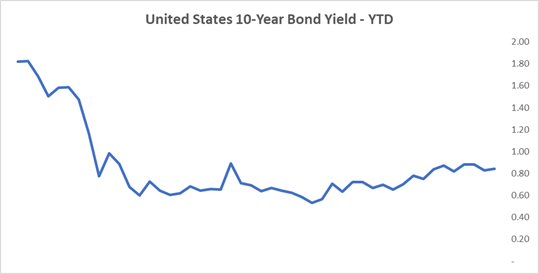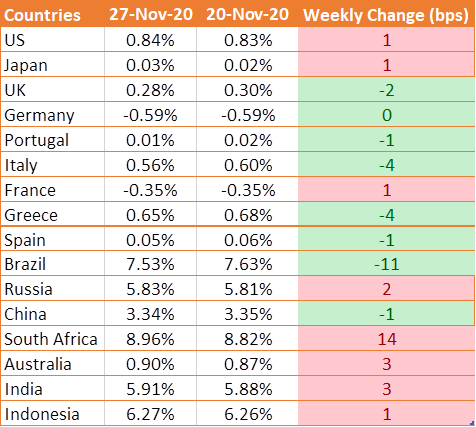Optimism over a rapid rollout of COVID-19 vaccines, which may result in faster economic recovery across the globe, underpinned the sentiment for emerging-market assets. Owing to this, the safe-haven USD weakened globally and, in turn, supported the Indian currency last week.
Biden has made it clear that tackling the pandemic is his first priority and has called on U.S. lawmakers to pass a new stimulus bill before he officially takes office in January. His nomination of Janet Yellen, former head of the Federal Reserve who is credited with helping steer the economic recovery after the 2007 financial crisis and ensuing recession, has also played into the underlying belief that more fiscal help is on its way, pressurizing the USD.
Surging inflows from foreign investors helps INR
The market sentiment for INR was buoyed by foreign fund inflows into domestic equities given the increase in the weightage of Indian stocks in the MSCI Global Standard indices that comes into effect from Dec 1.
Earlier this month, MSCI said shares of 12 Indian companies would be included in its global indices, while stocks of two companies would be removed after the close of trade on Nov 30. Furthermore, five of the 12 stocks added in the Global Standard indices will also become part of the MSCI India Domestic Index, while two stocks would be excluded.
Net foreign equity purchases of USD 14.59 billion so far this year through Nov. 27 are already the most since 2014.
Indian Economy Shrinks Further
Indian’s economy shrank for a second straight quarter for the three months from July – September, although the contraction in the economy eased. The Indian economy shrank by -7.5% Q-o-Q compared to a -23.9% decline in the previous quarter.
Signs of a pickup in manufacturing and optimism surrounding a steady pickup in consumer demand could see the economy steadily recover over the coming months.
Vaccine optimism continues to drive risk flows
AstraZeneca revealed that its vaccine candidate is 90% effective with a preliminary half dose or 70% effective with a single dose. Furthermore, the vaccine can be stored at room temperature making distribution simple compared to peers Moderna & Pfizer’s vaccine candidates.
U.S. economy grew by 33.1% in the third quarter
US real gross domestic product (GDP) grew at an annual rate of 33.1% and 7.4% sequentially in the third quarter of 2020, signalling a rebound of the economy from the impacts of the coronavirus pandemic. In the second quarter, US real GDP contracted by 31.4% (9% at a quarterly rate), marking the lowest economic growth since the government started keeping records in 1947.
UST Yields stable as fourth quarter looks weak
US 10-year benchmark bond yield rose by 1 bps to 0.84% after President Donald Trump accepted that President-elect Joe Biden’s transition into the White House must begin. General Services Administration chief Emily Murphy told Biden in a letter that the Trump administration would make federal resources available for his transition into office.
The Fed’s minutes from its Nov. 4-5 policy meeting showed policymakers discussed possible ways to provide more accommodation. “Participants noted that the Committee could provide more accommodation, if appropriate, by increasing the pace of purchases or by shifting its Treasury purchases to those with a longer maturity without increasing the size of its purchases,” Fed minutes stated.





